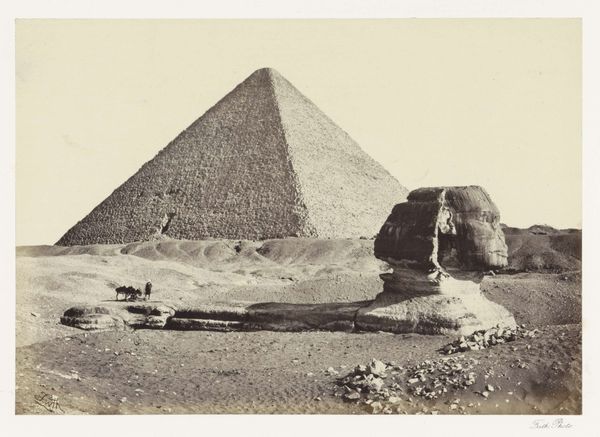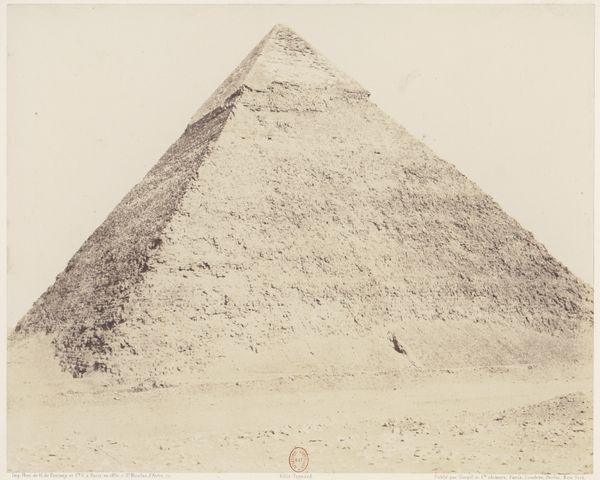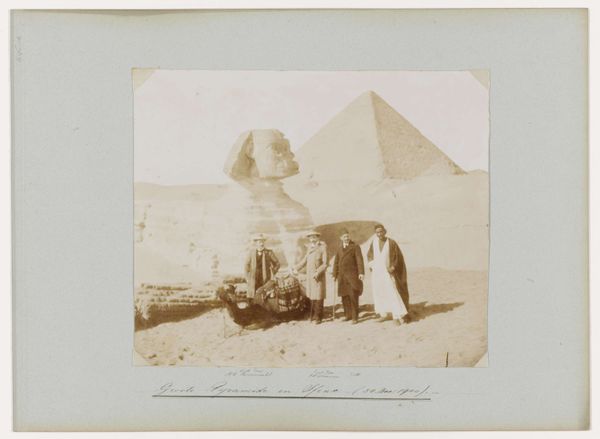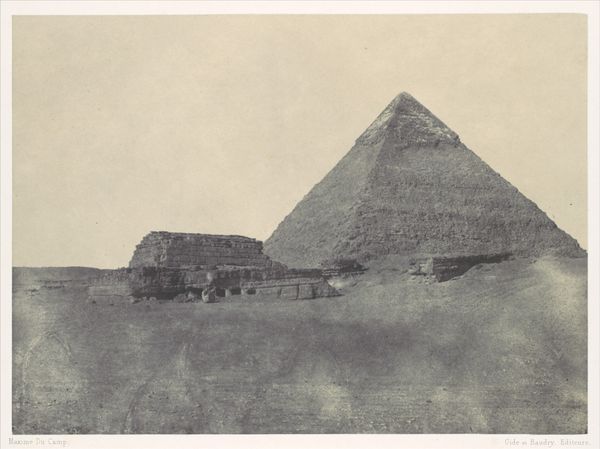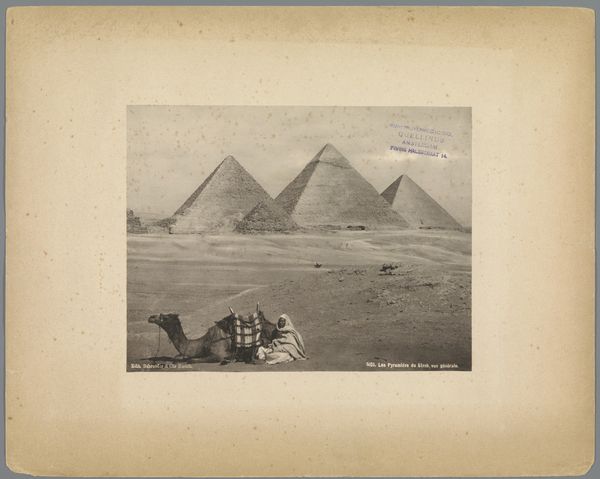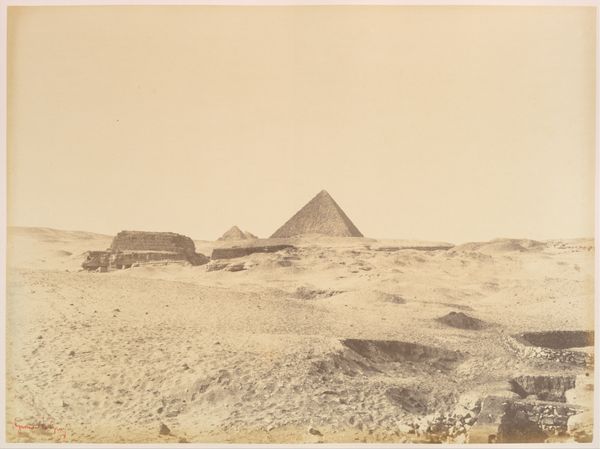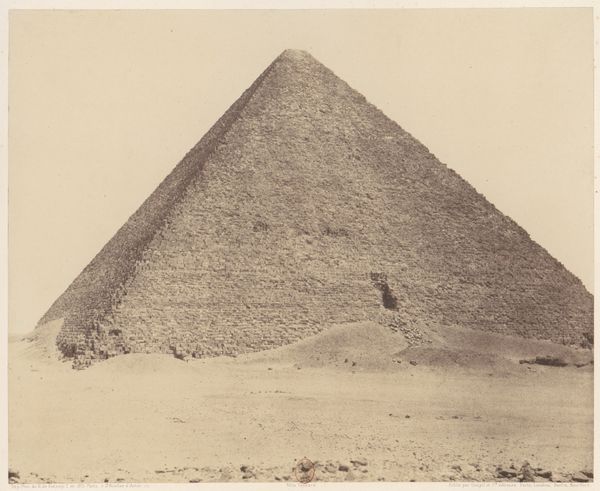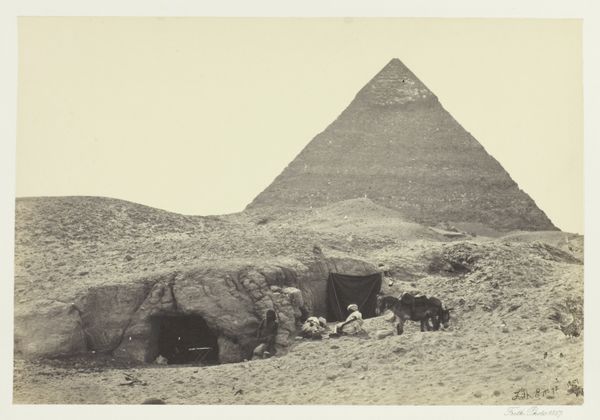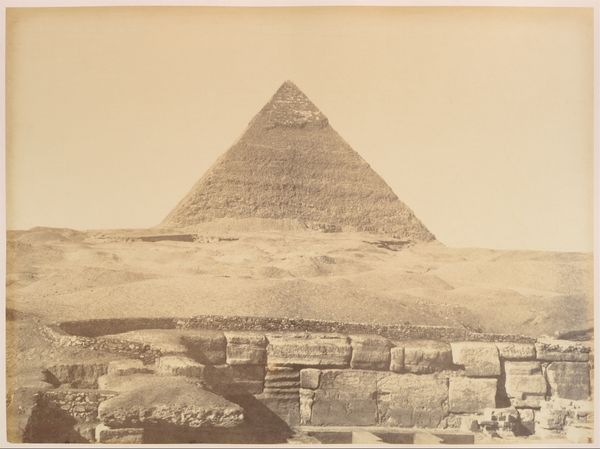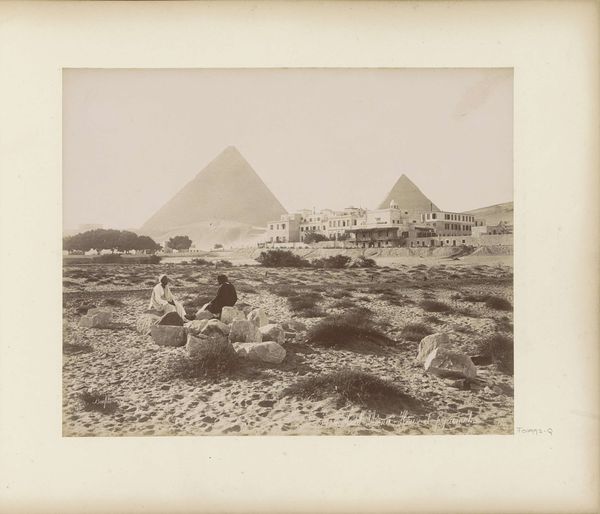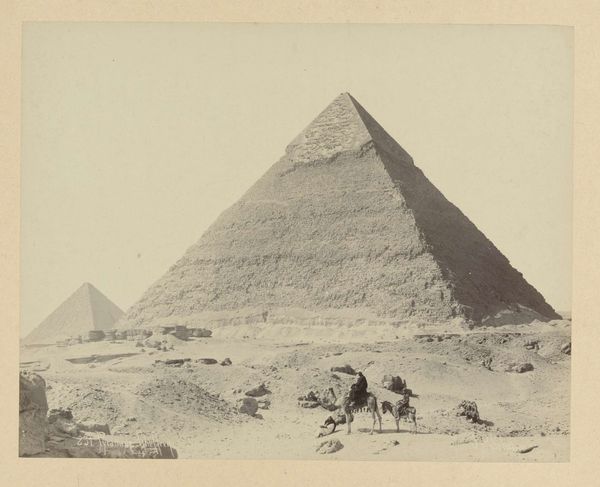
Djîzeh (Nécropole de Memphis), Sphinx et Pyramides 1851 - 1852
0:00
0:00
photography, albumen-print
#
landscape
#
ancient-egyptian-art
#
photography
#
ancient-mediterranean
#
orientalism
#
albumen-print
Dimensions: 23.9 x 30.0 cm. (9 7/16 x 11 13/16 in.)
Copyright: Public Domain
This is Félix Teynard’s photographic print of the Sphinx and Pyramids at Giza. Here we see the imposing Sphinx, a powerful symbol of ancient Egypt, guarding the sacred pyramids. This composite creature, part human, part lion, speaks to the potent blend of intelligence and primal strength. The pyramid behind it represents the culmination of earthly life, a pathway to immortality, connecting the mortal world with the divine. These symbols echo through time. Think of the lion motif, which appears in countless cultures, from heraldic emblems of European royalty to the guardian lions of Chinese temples. The human-animal hybrid is also a recurring figure, embodying the fusion of human consciousness with the untamed forces of nature. Like dreams where our deepest fears and desires take symbolic form, the image of the Sphinx taps into our collective unconscious. Consider how the Sphinx has been reinterpreted over the centuries. It represents riddles, mysteries and the inscrutable nature of existence, a notion explored in the Greek myth of Oedipus. These ancient symbols are not static relics; they resurface, evolve, and take on new meanings in different historical contexts. They remind us of the cyclical nature of human experience, where the past is always present, shaping our understanding of the world.
Comments
No comments
Be the first to comment and join the conversation on the ultimate creative platform.
